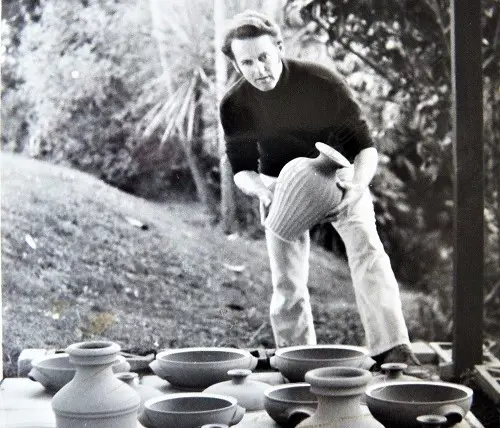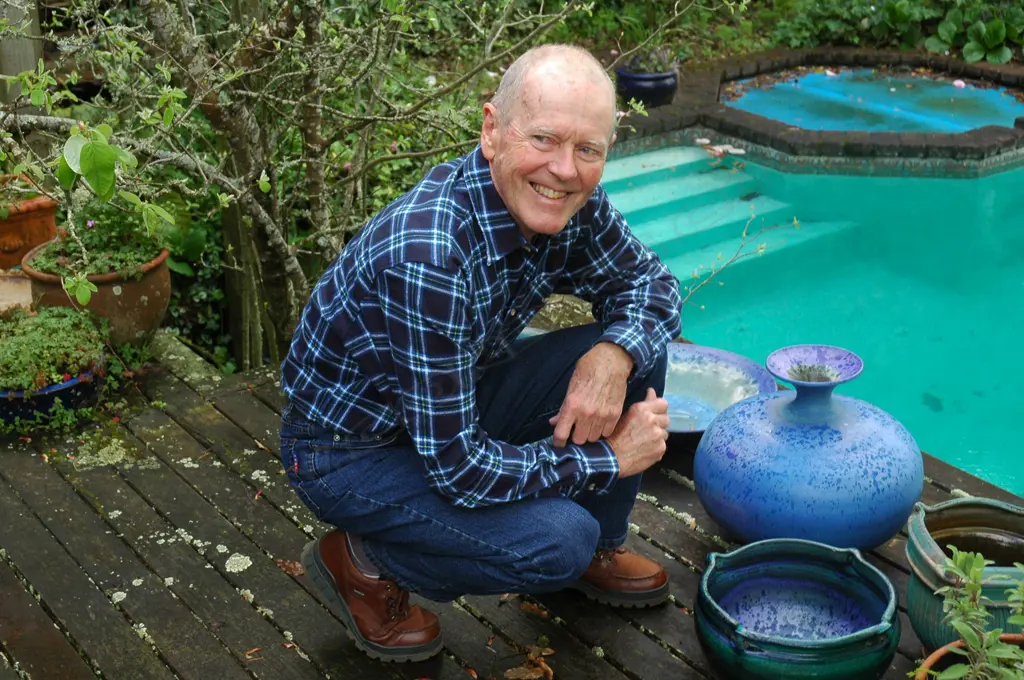JACQUIE & GRAEME STORM POTTERY COLLECTION
Tuesday, 26 October - Wednesday, 3 November 2021
''My first contact with pottery was in 1955 as a 19 year old student at Auckland Teachers’ College (now College of Education).
Looking for an opening bid of $10 (0 bids)
This lot is now closed 3 Nov 6:00 pm (NZST)
Buyer premium and GST is additional to your bid.
All bids are subject to our buyer terms and conditions
Lot Details
This led on to applying for a 3rd year to train at Dunedin Teacher’s College as an Arts & Crafts Adviser for the Education Dept. During this period and subsequent postings as a specialist to both the Waikato and Auckland districts. My own personal work with clay became a growing passion, leading eventually to the building of two kilns at my parent’s property at Orakei. By 1959, the urge to travel and explore the wider world had become paramount. In 1959 I travelled to the UK and Europe together with long ¬- time friend Howard Williams. While in London I attended the Central School of Arts & Crafts where I was fortunate to meet up with two NZers connected with the ceramic world – William Newland who taught throwing at the School and Kenneth Clarke, whose studio I worked at later in London. Lucie Rie whose pottery I had long admired, also became a friend and through her I met Hans Coper and also a young Australian potter Gwyn Hanssen. I worked for Gwyn at her pottery near Portobello Road. I also visited Bernard Leach at St. Ives and Harry & May Davis at Crowan. For me a highlight was going to the Arabia factory in Helsinki. This was my first visit to Finland – my Father’s homeland – and I felt an immediate empathy for the country with its lakes, forests and islands. The Arabia ceramics factory had a unique system of artist’s studios. It was here that I first realized it was possible to achieve colourful glazes at high (stoneware) temperatures. Brilliant blue, green, purple colours, sourced from copper carbonates. Until then I had been – like most NZ potters of the day, following the Japanese traditions. In NZ again, I went back to my former job as an Arts & Crafts Adviser for the Education Dept. When not travelling to schools, I spent time building a pottery and a larger oil fired kiln at Orakei. Thanks to the support of two early craft shops in Auckland, the “Art of The Potter” run by Dan Pierce in Victoria Street and “New Vision” in His Majesties Arcade established by Tina & Kees Hos, recent arrivals from Holland. It may not have occurred to the general public of the time that gallery owners like these who showed faith in and gave encouragement to, young aspiring crafts people, made all the difference between success and failure. The purchase of the next bag of clay or the refilling of the oil tank depended entirely upon selling work from the previous firing – and being paid for it then and there. These good folk in fact shared the risk and as such were invaluable. Bless their memory! Thanks to them I dared to think that becoming a full-time potter might be a feasible profession. I say “dared” as it was 1964 and the year before my Wife to be, Jacquie and I, were to marry. I was able to make the equivalent of my teaching wage (hardly a boast). We married and here we are 56 years later still happily together, after a life full of wonderfully rich experiences. The pots offered here have been selected over the years from the many firings I have done since the 1960s. I often put special pieces aside because they appealed to me personally for one reason or another. Many of them have never been exhibited before. The pinch pots are a case in point, as are some of the bellarmines for which I have had a long-time love affair. Having collected some of the original 16th/17th examples during my travels. In the late 1950s, I built a small salt glaze kiln on my return to NZ, to experiment with the technique. Many of these early salt glazed examples of mine were unmarked (as were the originals) but later as I began using ash and other glazes on the pieces and firing them in one of my stoneware kilns, I began to identify them with my own mark." Graeme Storm



